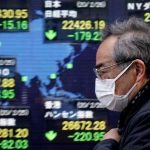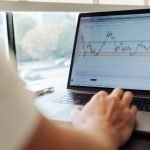Between panic and ‘the fear of missing out’: what to do
The coronavirus pandemic has caused a global health crisis and a deep slump in economic activity around the world. Job numbers are falling rapidly and unemployment is surging. Investment markets are in panic mode.
Many governments – those of the US and Australia among them – are responding to the economic crunch with budget and monetary measures on a massive scale.
Here’s a reminder of the recent swings in financial markets:
- At one stage, average share prices were 35-40 per cent below the record heights of seven weeks ago; then rebounded by up to 15-20 per cent; volatility remains extremely high.
- Government bonds — traditionally safe assets in a crisis – initially saw a spiking in yields. Bond prices (which move inversely with yields) declined for a few days. Government bond yields have since rallied and stabilised.
- Around the world, cash rates are negligible; some are modestly negative.
- Competition between Saudi Arabia and Russia to sell oil into the weakening demand caused oil prices to collapse (by 50 per cent on one day, before climbing by a fifth on another day). In contrast, the price of iron ore – our major export – had at the time of writing remained above $US80 a tonne, supported by expectations of buoyant demand from China.
- The gold price has moved a little higher, mainly on days when the US dollar softened in value. There’s been virtually no crisis-time interest in digital currencies such as bitcoin.
The fall in share prices has left many share investors thinking about when their sizeable losses will be recouped. And investors with cash are wondering whether or not they should consider buying shares at the low prices – and, if so, when and how.
Here’s a reminder of some lessons from past crises, a comment on the serious outlook for the global economy, and indicators to watch as events unfold.
Crises and panics are recurring features of investment markets, notably sharemarkets. Diversification, including maintaining a reasonable level of safe assets even at negligible yields, is always an important principle of investing.
Every share price collapse has been followed by a rebound – mostly at short notice and often coming through earlier than had generally been anticipated (the exceptions were the crises of 2008, 1929 and 1893). If investors don’t sell out at the bottom, they benefit when recovery occurs. Financial crises are times when investors should buy and not sell shares.
How deep and for how long might the collapse in economic conditions last?
Two main influences will determine what happens. One is how key details of the pandemic change over time: the more “the curve is flattened”, and moves lower, the better the prospects for economic activity. Investors should closely watch the daily updates on rates of change in confirmed cases of the virus and how many deaths have resulted. (Despite the criticism from many naysayers – and despite the totally regrettable experience when the Ruby Princess docked in Sydney – Australia has done well to date, relative to most countries, in containing the coronavirus.)
For those itching to return…
The second question is will the fiscal and monetary policies now being put in place have their intended effects of arresting and then reversing the collapse in the global economy – and, if so, when? Even a brief look at the US and Australia, where some forecasters fear unemployment rates could rise to 30-40 per cent, shows the massive new rounds of policy measures are necessary – and may well be added to. Of course, they will also create problems for the longer term, which will be the focus of this column over coming weeks.
In the US (where GDP is a bit over $US20 trillion [$33 trillion]), congress has legislated an additional fiscal stimulus worth $US2 trillion. It includes direct grants to a lot of Americans, a big increase in funding for healthcare, and loans to small and large businesses. And the Fed has cut the cash rate to near zero, reinstated quantitative easing, and is to purchase a wide variety of bonds and debts to stabilise interest rates and maintain liquidity.
In Australia (where GDP is $2 trillion), the federal government has introduced a fiscal stimulus package of more than $220bn, including $130bn to fund wages subsidies for about half the workforce for six months. It will also provide free childcare for children of essential workers and for vulnerable children. The Reserve Bank has cut its cash rate to 0.25 per cent, adopted a similar target for the yield on three-year government bonds, will support the liquidity of the financial system by trading in a wide range of assets, and will support lending to small and medium-sized businesses.
These measures won’t prevent sharp contractions in economic conditions in the first half of 2020 – but should help underpin a strong rebound in business conditions by year’s end. The combination of depressed share prices and the massive scale of the economic stimulus packages has left some investors itching to re-enter the sharemarket.
Suggestions to these investors are:
- Allow for further wide swings in share prices. (I love the comment by Howard Marks that market sentiment now swings quickly between “panic” and “fear of missing out”).
- In particular, expect further periods of gloom as closely watched indicators on economic conditions turn ugly.
- Prepare a list of shares (or share funds) suited for their longer-term needs and compatible with their risk profile.
- When the investor is ready to re-enter the sharemarket, perhaps to do so for a time by way of “dollar cost averaging”.
Article source: Australian Unity
Disclaimer: This article is a publication of Australian Unity Personal Financial Services Limited ABN 26 098 725 145 (AUPFS), AFSL 234459. Its contents are current to the date of publication only, and whilst all care has been taken in its preparation, AUPFS accepts no liability for errors or omissions. The application of its contents of specific situations (including case studies and projections) will depend upon each particular circumstance. This publication is general in nature and has been prepared without taking into account the objectives or circumstances of any particular individual or entity. It cannot be relied upon as a substitute for personal financial, taxation, or legal advice. This article was produced on 21 April 2020. © Copyright 2020



